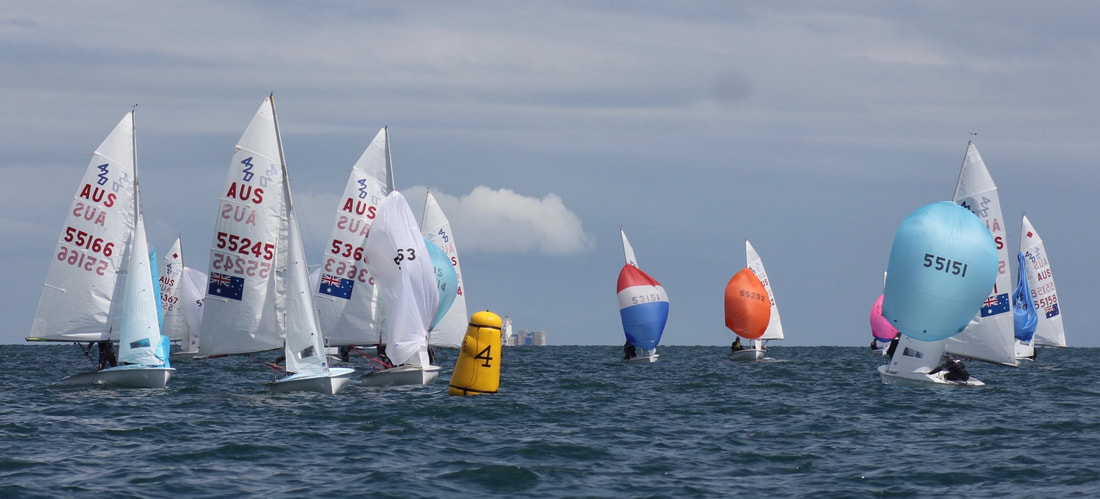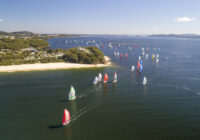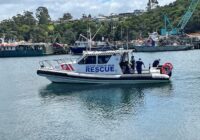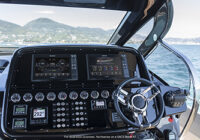By Ian Humphries
National Race Officer
International Judge
Arbitration (RRS Appendix T) can be a very useful and effective method to resolve a protest between two boats involving Racing Rules such as Windward/Leeward, Overlaps and Mark Roundings.
Appendix T is only one and a half pages at the end of the Racing Rules but it has an air of mystery around it! As Sailing Committees, Class Associations and Protest Committees develop a better understanding, Arbitration is regularly being added to Sailing Instructions. It has previously been referred to as Mediation but is now refined to a point that is defined clearly as Arbitration.
The role of Arbitrator is initially as a Moderator between sailors discussing an incident where they have had a tangle on the water. It is important to bring them back to the incident that has been protested if they start talking about what happened two legs earlier, at the start, or even in previous races! It is important to understand the Appendix and the two key roles of the Arbitrator to close the meeting if it doesn’t seem an outcome is likely or offer an Opinion, clearly defined in Appendix T3.

An example of Arbitration could be two boats in a mid-week handicap start pursuit race reaching to a mark for a starboard rounding. They are both sailing well below the mark and before the zone. The faster boat approaching from astern becomes overlapped about a boat length below the slower boat. A crew member trimming the headsail on the leeward side of the slower boat turns to the Helm and says “They’re coming up”. The Helm looks under the boom and sings out very loudly … “SAIL YOUR PROPER COURSE” … the faster boat appears to keep coming up so the slower boat Helm shouts “PROTEST” and simultaneously displays a red flag furled on the backstay. The faster boat to leeward bears away, waits until they have sailed through below and are clear ahead, then sails up to the mark and goes around with the slower boat several boat lengths behind. No other boats catch them – they finish first and second in a twenty-three boat fleet.
The skipper of the slower boat who finished second submits a Protest Form within the time limit outlining they think the faster boat to leeward broke RRS 17.
Historically the Protest Committee chair would set a time for a hearing, maybe an evening in a few days’ time, find another couple of club members that have completed the Australian Sailing online Protest Committee Member course and advise the two boats to have their representatives and any witnesses available …
A big advantage of Arbitration is this matter may be sorted out straight away by an Arbitrator arranging a quick meeting with parties from the two boats that were on board at the time of the incident. It may be found they agree with each other that they were sailing below the mark, the actual meaning of RRS 17 may be clarified as being for a boat to not sail above her proper course when they read the Rules carefully… and the slower Protestor boat actually being required to keep clear as windward boat under RRS 11, which they did. The Arbitrator can offer an opinion – RRS T3(b) – no boat will be penalised for breaking a rule with an outcome being – RRS T4(b) – the protestor can withdraw the protest and the Arbitrator can then act on behalf of the Protest Committee to allow the withdrawal in accordance with RRS 63.1. It’s all over and done with then and there. The Arbitrator offering an opinion is integral to the process and it is essential they understand the constraints and restrictions of Appendix T.
Arbitration has a couple of main advantages:
1. For a single protest, a quicker outcome can be achieved for everyone (Sailors, witnesses and Protest Committee) for a valid protest with either a withdrawal by the Protestor, or scoring penalty if the Protestee agrees they broke a rule;
2. In a big regatta with multiple protests after each day of racing, some of them can be quickly dealt with by Arbitration without going to a full Protest Hearing.
Appendix T (Arbitration) states in the preamble:
This appendix applies only if the Notice of Race or Sailing Instructions so state … ie at least one or the other, not necessarily both – Arbitration can be added to the SI’s for an event even if not considered in the NoR.
The preamble goes on with two further comments:
I. Arbitration adds an extra step to the protest resolution process but can eliminate the need for some protest hearings, thus speeding up the process … as in the above example.
II. Arbitration may not be appropriate for all events as it requires an additional knowledgeable person to act as the arbitrator … on completion of Australian Sailing’s Regional Judge course, Protest Committee members should feel more confident with Appendix T to be Arbitrators. The World Sailing Judges Manual contains further guidance.
The body of Appendix T (Arbitration) has clear parts:
T1 – Post-Race Penalties summarises Arbitration can be used for a breach of RRS Part 2 (When Boats Meet) or RRS 31 (Touching a mark), specifies a 30% Scoring Penalty as standard and that a boat taking a Scoring Penalty does so in writing – a good Protest Form has boxes to tick and an area for the parties and Arbitrator to sign. The Scoring Penalty can be changed in the Sailing Instructions to strike a balance between not being too harsh (eg too close to DSQ) and not too soft (ie boats not taking turns on the water if it’s easier to take a Scoring penalty back on shore).
T2 – Arbitration Meeting specifies each party must be represented by a person on board at the time of the incident and no witnesses are permitted. The Arbitrator can decide before or during the meeting that arbitration is not appropriate and proceed to a Protest Hearing. The Arbitrator can go on to be a member of the Protest Committee. In some circumstances observers may attend an Arbitration, eg a coach or parent at a youth event – but they cannot be witnesses if it goes to a Protest Hearing.
T3 – Arbitrator’s Opinion is restricted to three: a) the protest is invalid; b) no boat will be penalised for breaking a rule; or c) one or more boats will be penalised … identifying the boats, rules broken and penalties.
T4 – Arbitration Meeting Outcomes are a) a Post-Race Penalty (T1 above) or b) a boat may ask to withdraw her protest (as in above example). Unless all protests involving the incident are withdrawn, a Protest Hearing will be held.
Arbitration is very specific in when and how it can be used but it is quick and effective for the majority of protests we all see. It is more useful for some situations than others. The example above is close to a real world situation – a lot of sailors struggle with Overlaps and Proper Course so Arbitration and a thorough look at the Rules can clarify things quickly but a Port and Starboard protest can be much harder to sort out with two parties more often than not adamant they are both right! After about five minutes an Arbitrator should have a good indication if an Outcome (T4) is likely i.e., the penny drops for one or both parties after some Rules discussion. If the Arbitrator thinks it is heading to an Outcome, keep going – but if not, close the Meeting (T2) and go to a Protest Hearing. After fifteen minutes if you haven’t got to the point where you can give an Opinion (T3) that will result in an Outcome (T4), close the Meeting (T2) and go to a Protest Hearing.
Arbitration is a great way to handle a protest with either a withdrawal or softer penalty than DSQ, plus much less anxiety for sailors knowing the outcome more quickly. The more times you run Arbitration Meetings, the more you will feel comfortable with the process. Hopefully after reading this, it is demystified a little – there are plenty of IJ’s that will be happy to share their experience and help you refine Arbitration for your club or class.







